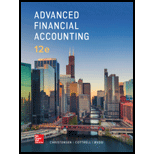
a
Introduction: The need for security regulations is emphasized ever since securities are offered to the general public. In the year 1911, several states begin passing blue sky laws, to regulate the offering of securities, because of the lack of any federal security regulatory laws, the blue sky refers to, and that did not have a sound financial base. Due to the heavy stock speculation in the 1920s and the great depression during 1929. Some form of federal regulation was necessary to restore confidence in the stock market.
The investment practices of the 1920s that contributed to the erosion of the stock market.
b
Introduction: The need for security regulations is emphasized ever since securities are offered to the general public. In the year 1911, several states begin passing blue sky laws, to regulate the offering of securities, because of the lack of any federal security regulatory laws, the blue sky refers to that did not have a sound financial base. Due to the heavy stock speculation in the 1920s and the great depression during 1929. Some form of federal regulation was necessary to restore confidence in the stock market.
To explain: The basic objective of Security Act of 1933 and Securities Exchange Act of 1934.
c
Introduction: The need for security regulations is emphasized ever since securities are offered to the general public. In the year 1911, several states begin passing blue sky laws, to regulate the offering of securities, because of the lack of any federal security regulatory laws, the blue sky refers to that did not have a sound financial base. Due to the heavy stock speculation in the 1920s and the great depression during 1929. Some form of federal regulation was necessary to restore confidence in the stock market.
To explain: The provisions of Foreign Corrupt practice act 1977
Want to see the full answer?
Check out a sample textbook solution
Chapter 14 Solutions
EBK ADVANCED FINANCIAL ACCOUNTING
- General Accounting Question please solve this problemarrow_forwardMOH Cost: Top Dog Company has a budget with sales of 7,500 units and $3,400,000. Variable costs are budgeted at $1,850,000, and fixed overhead is budgeted at $970,000. What is the budgeted manufacturing cost per unit?arrow_forwardOn April 1, the cash account balance was $37,690. During April, cash receipts totaled $459,690 and the April 30 balance was $23,620. Determine the cash payments made during April.arrow_forward
- Jenny leased equipment from Julio on December 31, 2015. The lease is a 10-year lease with annual payments of $150,000 due on December 31 of each year. The present value of the lease is $1,020,000. Jenny's incremental borrowing rate is 12% for this type of lease. The implicit rate of 10% is known by the lessee. What should be the balance in Jenny lease liability at December 31, 2016?solve this questionarrow_forwardHi teacher please provide for General accounting question answer do fastarrow_forward4 POINTSarrow_forward
 EBK CONTEMPORARY FINANCIAL MANAGEMENTFinanceISBN:9781337514835Author:MOYERPublisher:CENGAGE LEARNING - CONSIGNMENT
EBK CONTEMPORARY FINANCIAL MANAGEMENTFinanceISBN:9781337514835Author:MOYERPublisher:CENGAGE LEARNING - CONSIGNMENT Fundamentals of Financial Management, Concise Edi...FinanceISBN:9781305635937Author:Eugene F. Brigham, Joel F. HoustonPublisher:Cengage Learning
Fundamentals of Financial Management, Concise Edi...FinanceISBN:9781305635937Author:Eugene F. Brigham, Joel F. HoustonPublisher:Cengage Learning Financial Reporting, Financial Statement Analysis...FinanceISBN:9781285190907Author:James M. Wahlen, Stephen P. Baginski, Mark BradshawPublisher:Cengage Learning
Financial Reporting, Financial Statement Analysis...FinanceISBN:9781285190907Author:James M. Wahlen, Stephen P. Baginski, Mark BradshawPublisher:Cengage Learning Fundamentals Of Financial Management, Concise Edi...FinanceISBN:9781337902571Author:Eugene F. Brigham, Joel F. HoustonPublisher:Cengage Learning
Fundamentals Of Financial Management, Concise Edi...FinanceISBN:9781337902571Author:Eugene F. Brigham, Joel F. HoustonPublisher:Cengage Learning Fundamentals of Financial Management, Concise Edi...FinanceISBN:9781285065137Author:Eugene F. Brigham, Joel F. HoustonPublisher:Cengage Learning
Fundamentals of Financial Management, Concise Edi...FinanceISBN:9781285065137Author:Eugene F. Brigham, Joel F. HoustonPublisher:Cengage Learning





